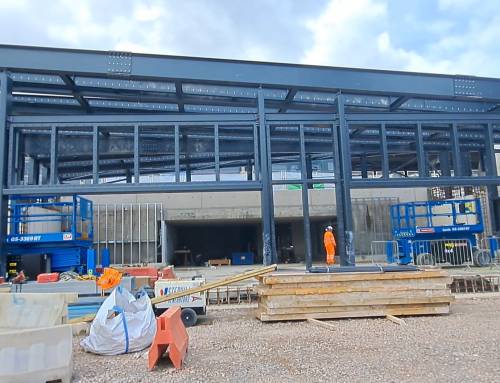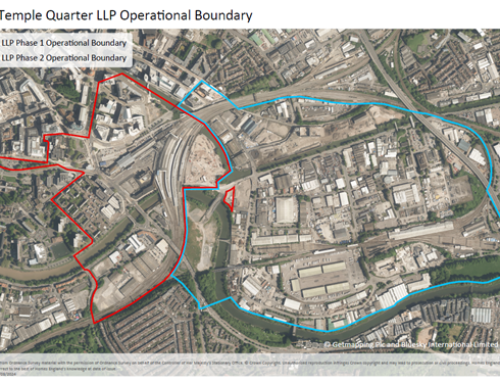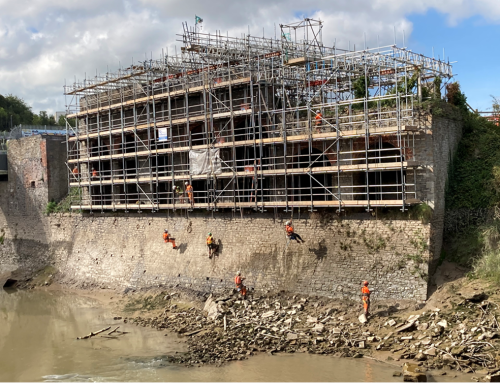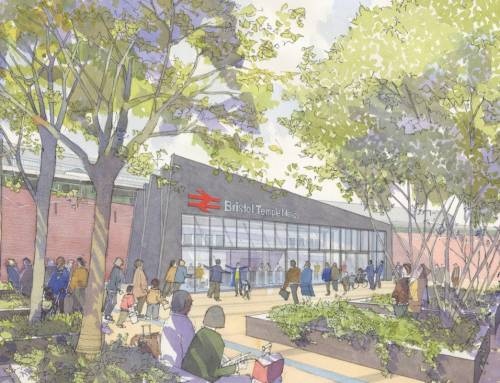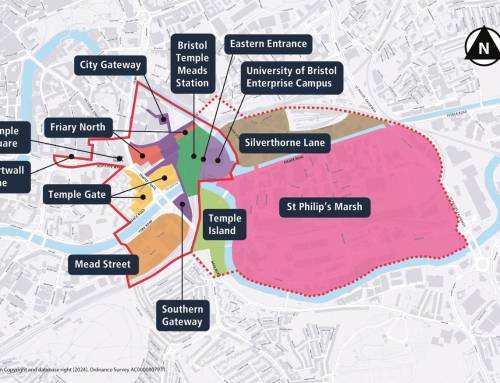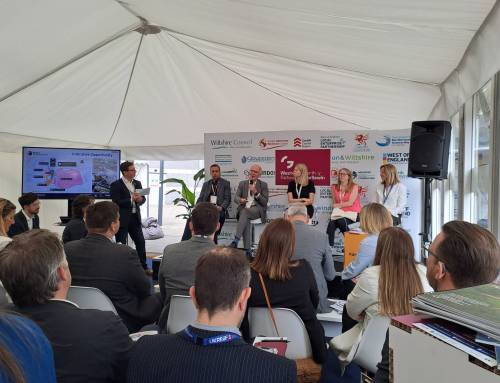If you’ve walked around the Enterprise Zone recently, you’ll have noticed that something is afoot on Arena Island. Since March 2015, the site has been used as the base for constructing a key aspect of one of the first major infrastructure projects in the area: a bridge from Arena Island to Cattle Market Road. The bridge will be a key access route to the Arena when it opens, and will contribute to boosting the zone’s connectivity to the rest of the city.
With the bridge due to be in place in September, we thought it was time to get to know it a bit better.
A time lapse showing the latter stages of the bridge’s construction. Film credit to Paul Appleby.
How was it constructed?
The individual pieces of the bridge arrived in Bristol in March 2015. They have been welded together on site to create the bridge frame, which has just been launched across the river. It is being moved across the river using a pulley-system and, once securely in place, the tarmac road and walkways will be added.
What’s it made of?
The bridge is made of around 137 individual pieces of steel, the largest of which weighs 28 tonnes. It features 820 tonnes of structural steel, and has necessitated 200 tonnes of equipment and temporary works to support it. 2.5 tonnes of onsite welding have taken place to date.
There are also 348 metres of concrete piles in the foundations.
How big is it?
The bridge is about 63 metres long and 18 metres wide.
Who will be able to use the bridge?
The bridge will be open to cars, pedestrians and bikes, with 3.5 metres of pedestrian and bike lanes on either side.
Who has been building the bridge?
The bridge was made possible by an £11m investment from the Homes and Communities Agency (HCA). A company called Sisk is building the bridge alongside construction firm Cimolai, and the project is being managed by engineering, development and management consultancy Pell Frischmann.
What else is interesting about it?
It’s the first newly built road bridge to launch across the River Avon for 100 years.
Also, it’s playing a key role in delivering green energy and superfast broadband to the zone, as it will have district heating pipes and communications ducts attached to its underside.
What are district heating pipes?
District heating is a network of underground pipes that supply energy, powered by a local energy centre. This network of district heating pipes will reduce the energy bills for those working and living in the zone, but also provide a much greener and more ethical energy source when supplied with energy from a low carbon energy source. All in all, they’ll reduce CO2 emissions by around 1,300 tonnes per year and enable new developments like the Arena to be supplied with low-carbon energy.
The installation of these pipes will also help companies in the Enterprise Zone get the best out of their location by providing them with cutting edge, ultrafast broadband. That’s because the infrastructure put in place for district heating will also be used to carry the fibre optic cables needed for this and, as such, the network is laying a strong foundation for building on Bristol’s reputation for being a creative, knowledge-intensive green capital.
Have any more questions? Please email btqez@bristol.gov.uk



